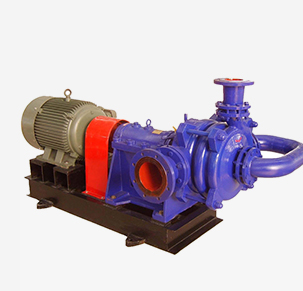English
- Afrikaans
- Albanian
- Amharic
- Arabic
- Armenian
- Azerbaijani
- Basque
- Belarusian
- Bengali
- Bosnian
- Bulgarian
- Catalan
- Cebuano
- Corsican
- Croatian
- Czech
- Danish
- Dutch
- English
- Esperanto
- Estonian
- Finnish
- French
- Frisian
- Galician
- Georgian
- German
- Greek
- Gujarati
- Haitian Creole
- hausa
- hawaiian
- Hebrew
- Hindi
- Miao
- Hungarian
- Icelandic
- igbo
- Indonesian
- irish
- Italian
- Japanese
- Javanese
- Kannada
- kazakh
- Khmer
- Rwandese
- Korean
- Kurdish
- Kyrgyz
- Lao
- Latin
- Latvian
- Lithuanian
- Luxembourgish
- Macedonian
- Malgashi
- Malay
- Malayalam
- Maltese
- Maori
- Marathi
- Mongolian
- Myanmar
- Nepali
- Norwegian
- Norwegian
- Occitan
- Pashto
- Persian
- Polish
- Portuguese
- Punjabi
- Romanian
- Russian
- Samoan
- Scottish Gaelic
- Serbian
- Sesotho
- Shona
- Sindhi
- Sinhala
- Slovak
- Slovenian
- Somali
- Spanish
- Sundanese
- Swahili
- Swedish
- Tagalog
- Tajik
- Tamil
- Tatar
- Telugu
- Thai
- Turkish
- Turkmen
- Ukrainian
- Urdu
- Uighur
- Uzbek
- Vietnamese
- Welsh
- Bantu
- Yiddish
- Yoruba
- Zulu
Telephone: +86 13120555503
Email: frank@cypump.com
Oct . 31, 2024 13:42 Back to list
Schematic Design of an Industrial Slurry Pump for Efficient Performance and Application
Understanding the Schematic of a Slurry Pump for Industrial Applications
Slurry pumps are essential components in various industrial applications, particularly in sectors such as mining, metallurgy, and wastewater management. These pumps are specifically designed to handle mixtures of liquid and solid materials, known as slurries. Understanding the schematic of a slurry pump is crucial for engineers and operators involved in the design, selection, and maintenance of these systems.
At its core, the schematic of a slurry pump typically includes several key components the pump casing, impeller, volute, suction and discharge ports, and the motor. The pump casing, often made from robust materials like cast iron or high-chrome alloys, is designed to withstand the abrasive nature of slurries. The impeller, the heart of the pump, is responsible for creating the hydraulic action that moves the slurry through the system. The design of the impeller can vary, with options such as closed, semi-open, or open configurations, influencing the efficiency and suitability of the pump for different slurry types.
In a typical schematic, the slurry enters the pump through the suction port. The impeller draws the mix into the pump and accelerates it by converting kinetic energy into pressure energy. The volute, which surrounds the impeller, plays a crucial role in converting this high-velocity flow into a more manageable flow rate suitable for discharge. The design of the volute is vital; it should minimize turbulence and maximize efficiency to reduce wear and tear on the pump components.
similar schematic of a slurry pump for industrial applications in ...

Another important aspect illustrated in the schematic is the orientation of the pump. Slurry pumps can be vertical or horizontal, with each design having its advantages depending on the application. Vertical pumps are ideal for applications with limited space, while horizontal pumps provide easier access for maintenance.
Additionally, the schematic often includes details about wear liners and seals, which are critical for extending the life of the pump. Given the abrasive nature of slurries, wear-resistant materials are often employed in these parts. Maintaining the integrity of seals is also essential to prevent leaks and ensure efficient operation.
Moreover, operational parameters such as flow rate, head, and power consumption are critical for assessing a pump's performance and choosing the right model for specific applications. Understanding these elements allows engineers to optimize systems, reduce downtime, and increase productivity.
In conclusion, a thorough understanding of the schematic of a slurry pump is fundamental for anyone involved in industrial applications. By grasping the roles of each component and their interaction, professionals can enhance performance, increase the longevity of pumping systems, and ensure the efficient transport of slurries in various industries.
-
ISG Series Vertical Pipeline Pump - Chi Yuan Pumps | Advanced Engineering&Industrial Efficiency
NewsJul.30,2025
-
ISG Series Pipeline Pump - Chi Yuan Pumps | High Efficiency, Energy Saving
NewsJul.30,2025
-
ISG Series Vertical Pipeline Pump-Chi Yuan Pumps|High Efficiency&Reliable Performance
NewsJul.29,2025
-
ISG Series Vertical Pipeline Pump|High Efficiency&Low Noise
NewsJul.29,2025
-
ISG Series Vertical Pipeline Pump - Chi Yuan Pumps Co., LTD.|High Efficiency, Energy Conservation, Low Noise
NewsJul.29,2025
-
ISG Series Vertical Pipeline Pump-Chi Yuan Pumps Co., LTD.|High Efficiency&Energy-Saving
NewsJul.29,2025










